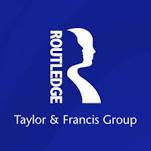Routledge, Global publisher of quality academic books, journals & online reference
Routledge is the world's leading academic publisher in the Humanities and Social Sciences. We publish thousands of books and journals each year, serving scholars, instructors, and professional communities worldwide. Routledge is a member of Taylor & Francis Group, an informa business.
Members:
Resources
Displaying 121 - 125 of 167Land Ownership and Property Rights in the Adirondack Park of New York, USA
Land ownership in the United States is understood as a bundle of sticks representing rights to sell, lease, bequeath, mine, subdivide, develop, and so forth. The right of exclusion allows owners to prevent others from exercising a right of access. Historically, access and then exclusion contributed to a sense of self-determination and personal freedom in the American landscape. Governing agencies reserve four rights for their use: condemnation, regulation, taxation, and escheat.
Extreme sports in natural areas: looming disaster or a catalyst for a paradigm shift in land use planning?
Historically, visitors’ motives for visiting protected areas included ‘rest, relaxation and reinvigoration’. Ecological impacts were typically low. Recent trends have increased use of protected areas for extreme sports, with greater numbers undertaking more active recreation, such as extreme sports. The effect of this trend is considered, together with potential management options. We propose that the development of appropriately targeted and delivered educational programmes could minimise environmental degradation.
Segmenting landholders for improving the targeting of natural resource management expenditures
Segmentation of landholders has rarely been undertaken in the natural resource management literature, yet it provides a rich set of information for planners to improve targeting of public investment and resources. Segmentation allows the identification of segments of landholders that are ‘investment ready’, their location and characteristics, and the land conservation incentive programmes that they would be most willing to participate in. Segments that are not investment ready are also identified, and the instances where they reside in critical ecological habitats.
Patchwork of land use, tapestry of risk
The links between built form and environmental health are, as yet, inadequately understood. Risk is a formless and ambiguous phenomenon tightly embedded in the myriad pattern of land uses that generate it. Our research, which is founded on a contextualist notion of policy design, demonstrates the potential of innovative land use policy instruments (i.e. form-based codes, conditional use permits) to address risk. We model environmental risks from point and mobile sources in Southeast Los Angeles (SELA), a known air toxics hotspot.
Creating socio-economic measures for community-based natural resource management: a case from watershed stewardship organisations
One consequence of the transition of rural communities from industrialised agriculture and natural resource extraction to sustainable development principles has been the rise of community-based natural resource management (CBNRM). CBNRM entails collaborative efforts, typically involving local, state and federal agencies, private firms and landowners, non-governmental organisations such as environmental and economic development groups, and watershed councils. There are no agreed-upon metrics or even broadly accepted approaches for assessing the effectiveness of these new institutions.


